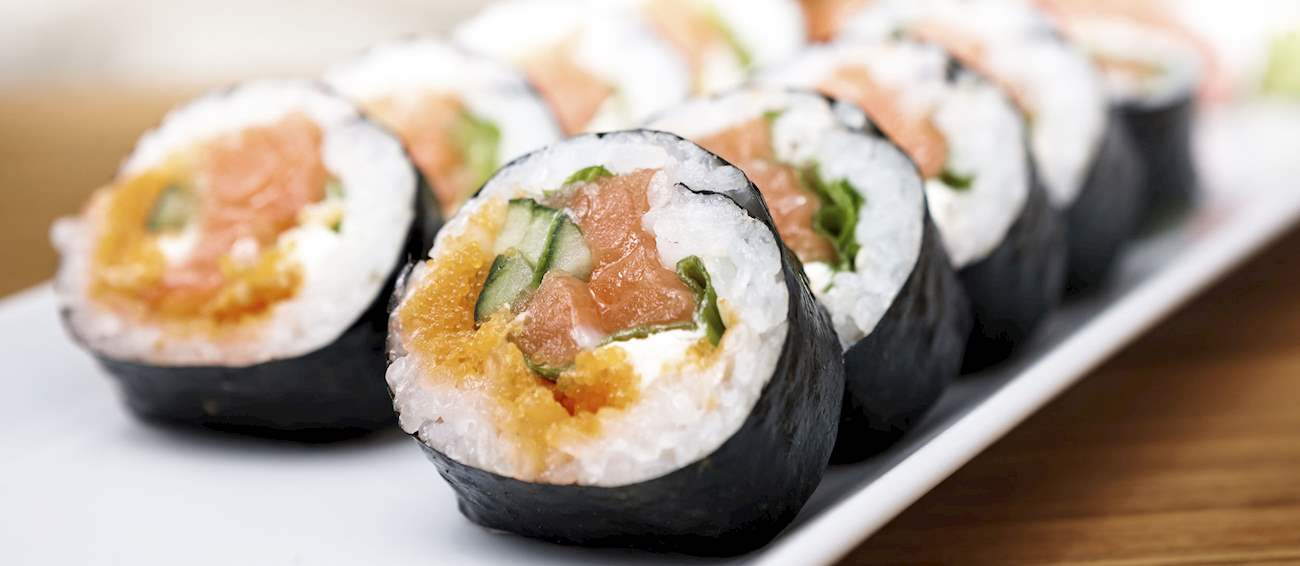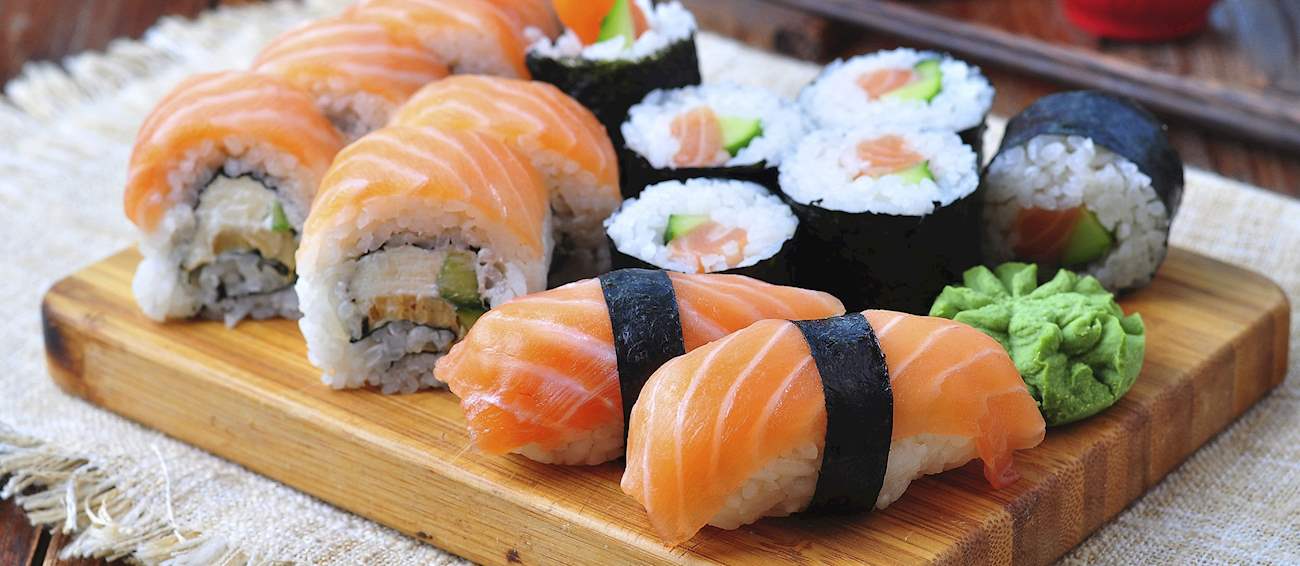Sushi
(すし, 寿司, 鮨)
Sushi is Japan's most famous culinary representative, typically made with rice and fillings which have been rolled inside a sheet of dry seaweed. However, the term sushi is actually an umbrella term covering a wide range of subvarieties which can be made with a myriad of different ingredients and in as many forms and presentations.
Although the dish has become wrongly synonymous with raw fish, the primary ingredient of every type of sushi is only vinegared rice. Originally, sushi was only a method of preserving fish - first developed in Southeast Asia, but it reached Japan in the 8th century.
Over time, the dish slowly transformed. Rice was no longer fermented but vinegared and eaten together with fish, and by the 19th century, sushi as we know it today was invented. Read more
Besides rice, which can be white or brown, other ingredients include seafood, meat, and vegetables that can be either raw or cooked. Termed as the original type of sushi, nigirizushi is prepared by draping a mound of rice with a sliced topping, frequently with some wasabi in between or on the side, while probably the most popular type of sushi known worldwide is makizushi; small, usually bite-sized cylindrical pieces most commonly wrapped in nori — a sheet of dry seaweed.
Other best-known types of sushi include chirashizushi, served as a bowl of rice topped with a selection of raw ingredients; the pressed variety called oshizushi; inarizushi - deep-fried tofu sacs containing a filling; the traditional narezushi made with fermented rice; and temaki, cone-shaped pieces of seaweed filled with ingredients.
Sushi can be eaten with chopsticks or fingers, and it is typically served on a platter or in a bento box with a compartment for dips (usually soy sauce). Due to the worldwide popularity of sushi, many variations of the dish developed outside of Japan.
Types of Sushi
Pairing tips
Sake
Sake is the most popular Japanese drink whose first written mention dates back to 3rd century. In its basic form, the drink is made by brewing yeast, koji... Read more
Recipe variations
Hosomaki
READY IN 2hThe following recipe is adapted from the Just One Cookbook website (www.justonecookbook.com). One rice cooker cup is 180 ml. This recipe calls for 2 cups of uncooked rice (4 cups of cooked), which makes for 10 thin sushi rolls.
Futomaki
READY IN 2h 45minThe following recipe is adapted from the Just one cookbook website (www.justonecookbook.com). Make the seasoned shiitake, kanpyo, and tamagoyaki a day ahead to save time. In the absence of a traditional Japanese rectangular frying pan, use a regular round pan.
Surimi Uramaki
READY IN 35minThis next recipe for uramaki or California roll is adapted from the book Sushi written by Szwillus, Mitani and Borisolli.
Temaki
READY IN 1h 10minThis recipe is adapted from the website justonecookbook.com. The recipe for sushi rice makes for 6 cups, so adjust the amounts accordingly.
Sake nigiri sushi
READY IN 1h 5minThe following is the authentic sake nigiri sushi recipe that shows how to master a Japanese favorite in your own kitchen. The recipe is easy to follow and gives instructions on how to prepare the sushi rice and slice the salmon. To complete the picture, serve with soy sauce and pickled ginger.
Maguro nigiri sushi
READY IN 1h 10minThe following is the classic preparation of maguro nigiri sushi. The recipe is easy to follow, with clear and detailed instructions to ensure your sushi ends up the best possible. We recommend going over all the tips before deciding to prepare the sushi, as there might be a few steps that need to be undertaken before jumping onto the recipe, such as checking your equipment and defrosting tuna.
Otoro nigiri sushi
READY IN 1h 10minThe following is the classic preparation of otoro nigiri sushi. The recipe is easy to follow, with clear and detailed instructions to ensure your sushi ends up the best possible. We recommend going over all the tips before deciding to prepare the sushi, as there might be a few steps that need to be undertaken before jumping onto the recipe, such as checking your equipment and defrosting tuna.
Chutoro nigiri sushi
READY IN 1h 10minThe following is the classic preparation of chutoro nigiri sushi. The recipe is easy to follow, with clear and detailed instructions to ensure your sushi ends up the best possible. We recommend going over all the tips before deciding to prepare the sushi, as there might be a few steps that need to be undertaken before jumping onto the recipe, such as checking your equipment and defrosting tuna.
Sushi Authentic recipe
The following recipe is adapted from the Just One Cookbook website (www.justonecookbook.com). One rice cooker cup is 180 ml. This recipe calls for 2 cups of uncooked rice (4 cups of cooked), which makes for 10 thin sushi rolls.






















